Agroforestry, a sustainable land management system that integrates trees and crops or livestock on the same piece of land, has gained significant attention in recent years due to its potential for enhancing agricultural productivity while simultaneously providing environmental benefits. The concept revolves around harnessing the synergistic interactions between forests and agriculture to create a holistic approach towards sustainable food production. For instance, imagine a small-scale farmer in a rural community who adopts agroforestry practices by planting fruit trees alongside annual crops such as maize and beans. This integration not only diversifies their income sources but also enriches the soil through improved nutrient cycling, reduces erosion, conserves water resources, sequesters carbon, and provides shade for the crops.
Agroforestry systems offer numerous advantages over conventional agricultural methods by capitalizing on natural ecological processes and maximizing resource efficiency. By strategically selecting tree species that complement crop types and taking into account factors such as soil type, climate conditions, and market demand, farmers can optimize their yields while minimizing negative impacts on the environment. Moreover, these integrated systems provide additional ecosystem services like biodiversity conservation and habitat creation for wildlife. Agroforestry also presents an opportunity to address pressing global challenges such as climate change mitigation and adaptation by acting as carbon sinks and promoting resilience in agricultural systems.
One of the key benefits of agroforestry is its ability to sequester and store carbon dioxide, a greenhouse gas that contributes to climate change. Trees absorb CO2 from the atmosphere through photosynthesis and store it in their biomass and soils. By incorporating trees into farming practices, agroforestry systems can help mitigate climate change by reducing net emissions of CO2 and other greenhouse gases. Additionally, the shade provided by trees helps regulate temperature, reducing heat stress on crops and livestock.
Furthermore, agroforestry enhances the resilience of agricultural systems to climate variability and extreme weather events. The presence of trees can act as windbreaks, protecting crops from strong winds and minimizing soil erosion. Trees also contribute to water conservation by intercepting rainfall and reducing runoff, allowing for better infiltration and groundwater recharge. This is especially important in areas prone to drought or erratic rainfall patterns.
Agroforestry promotes biodiversity conservation by providing habitat for various plant and animal species. The diversity of tree species within these systems attracts insects, birds, and other wildlife that contribute to pollination and pest control. The integration of different crop varieties further enhances genetic diversity, making agroforestry farms more resilient against pests and diseases.
In conclusion, agroforestry offers a sustainable approach to food production that balances productivity with environmental stewardship. By harnessing the interactions between forests and agriculture, farmers can optimize yields while conserving natural resources, mitigating climate change, promoting biodiversity, and building resilience in the face of global challenges.
Silvopasture: Integrating trees, forage, and livestock to enhance land productivity
Silvopasture is a dynamic agroforestry system that involves the integration of trees, forage plants, and livestock on the same piece of land. This approach offers numerous benefits in terms of enhancing land productivity while also promoting sustainable agriculture practices. To illustrate the potential impact of silvopasture, consider the following hypothetical case study: A farmer in a semi-arid region decides to implement a silvopasture system by planting rows of nitrogen-fixing trees alongside his existing pastureland. As a result, he observes improved soil fertility, increased forage production, and healthier livestock.
One key advantage of silvopasture lies in its ability to enhance land productivity through synergistic interactions among different components. By incorporating trees into the grazing area, farmers can benefit from their multiple functions. Trees provide shade for animals during hot summers, reducing heat stress and improving animal welfare. Additionally, tree roots help improve soil structure and increase water infiltration rates, thereby mitigating erosion risks and supporting better nutrient cycling within the ecosystem.
Moreover, these integrated systems offer an array of environmental benefits that contribute to long-term sustainability. The presence of trees enhances biodiversity by providing habitat for various wildlife species and promoting ecological balance. Furthermore, this agroforestry practice contributes to climate change mitigation efforts as trees sequester carbon dioxide from the atmosphere through photosynthesis.
To evoke an emotional response in readers, here are some key points about silvopasture:
- Increased resilience: Silvopastoral systems exhibit greater resistance against droughts and extreme weather events due to enhanced water availability provided by deep-rooted trees.
- Improved economic viability: Farmers practicing silvopasture witness higher incomes through diversified revenue streams such as timber sales or non-timber forest products like fruits or nuts.
- Enhanced community well-being: Silvopastoral landscapes not only generate economic benefits but also foster social cohesion within communities by creating shared spaces for recreational activities and cultural events.
- Future-oriented sustainability: By adopting silvopasture, farmers contribute to the preservation of natural resources for future generations while ensuring food security and sustainable livelihoods.
To further illustrate the benefits of silvopasture, consider the following table:
| Benefits of Silvopasture | Examples |
|---|---|
| Enhanced soil fertility | Increased organic matter content, improved nutrient cycling |
| Higher biomass production | Greater availability of forage, timber products |
| Climate change mitigation | Carbon sequestration through tree growth |
| Biodiversity conservation | Habitat creation, support for wildlife populations |
Transitioning into the subsequent section about “Alley cropping: Maximizing crop yields by planting trees in rows,” it becomes evident that agroforestry practices offer diverse approaches to enhance sustainable agriculture without compromising productivity.
Alley cropping: Maximizing crop yields by planting trees in rows
Another innovative approach within the realm of agroforestry is alley cropping. Alley cropping involves planting rows of trees alongside crops, creating a mutually beneficial relationship that maximizes crop yields and provides additional benefits to the environment.
To illustrate the potential of alley cropping, let’s consider a hypothetical case study involving a small-scale farmer in a tropical region. The farmer decides to implement an alley cropping system on their land by planting rows of nitrogen-fixing trees such as acacias or leucaenas between their cash crops, such as maize or beans. This integration allows for greater nutrient availability through nitrogen fixation, reducing the need for synthetic fertilizers while enhancing soil fertility.
Alley cropping offers several advantages over conventional agricultural practices:
- Enhanced soil conservation: The tree rows act as windbreaks and reduce erosion by preventing topsoil loss during heavy rainfall events.
- Diversification: By incorporating both annual crops and perennial trees into the same area, farmers can diversify their income streams and mitigate risks associated with single-crop farming.
- Climate change mitigation: Trees play a crucial role in sequestering carbon dioxide from the atmosphere, helping combat climate change.
- Biodiversity promotion: The presence of trees enhances habitat diversity, attracting beneficial insects and birds that contribute to natural pest control.
To further convey these benefits visually, we present a table showcasing the positive environmental impacts of alley cropping:
| Environmental Impact | Explanation |
|---|---|
| Soil Conservation | Tree rows prevent erosion and protect valuable topsoil from being washed away during heavy rains. |
| Carbon Sequestration | Trees absorb carbon dioxide from the atmosphere through photosynthesis, mitigating greenhouse gas emissions. |
| Habitat Enhancement | The presence of trees creates diverse habitats that attract wildlife essential for pollination and pest control. |
| Nutrient Cycling | Nitrogen-fixing trees in alley cropping systems enrich the soil with essential nutrients, reducing reliance on synthetic fertilizers. |
As we can see, alley cropping is a promising agroforestry practice that offers numerous benefits to both farmers and the environment. By integrating rows of trees alongside cash crops, this approach enhances land productivity while promoting sustainable land management.
Transitioning into our next section on “Agroforestry Systems: Innovative Approaches to Sustainable Land Management,” it becomes evident that these practices are just a glimpse into the vast potential of agroforestry in transforming agriculture towards more sustainable and resilient systems.
Agroforestry systems: Innovative approaches to sustainable land management
Agroforestry systems have gained significant attention in recent years as innovative approaches to sustainable land management. By integrating trees into agricultural landscapes, these systems offer a multitude of benefits that contribute to enhanced environmental sustainability and increased productivity. One such agroforestry system is alley cropping, where rows of trees are planted amidst crops to maximize yields. For instance, a case study conducted in Ghana demonstrated the effectiveness of alley cropping by intercropping maize with nitrogen-fixing tree species like Gliricidia sepium. The study found that this integration not only improved soil fertility but also significantly increased maize yields compared to conventional monoculture practices.
There are several key reasons why agroforestry systems are gaining prominence worldwide:
- Biodiversity conservation: Integrating trees within agricultural landscapes provides habitat for diverse plant and animal species, promoting ecological balance and preserving biodiversity.
- Climate change mitigation: Trees play a crucial role in sequestering carbon dioxide from the atmosphere, thus helping mitigate climate change impacts.
- Soil erosion control: Tree roots bind soil particles together, reducing erosion caused by water or wind and preventing soil degradation.
- Water resource management: Agroforestry systems can help regulate water availability by improving infiltration rates and reducing runoff, thereby minimizing the risk of flooding while ensuring adequate moisture for crop growth.
To better understand the varied benefits offered by different types of agroforestry systems, let us explore them through a three-column table:
| Agroforestry System | Benefits | Examples |
|---|---|---|
| Alley Cropping | Increased crop yields | Maize intercropped with Gliricidia sepium |
| Silvopasture | Enhanced livestock production | Cattle grazing under shade trees |
| Windbreaks | Protection against strong winds | Orchards sheltered by tall hedgerows |
By examining how each agroforestry system contributes to sustainable land management and agricultural productivity, we can recognize the potential of these approaches in addressing pressing environmental challenges.
Moving forward, let us delve into a detailed exploration of the positive outcomes that emerge from integrating trees within agricultural systems. Agroforestry benefits encompass diverse aspects such as improved soil health, increased biodiversity, enhanced resilience to climate change impacts, and economic opportunities for farmers. This analysis will shed light on the transformative power of agroforestry practices in creating more sustainable and productive farming landscapes.
Agroforestry benefits: A look at the positive outcomes of integrating trees in agriculture
Agroforestry systems have emerged as innovative approaches to sustainable land management, offering numerous benefits in enhancing agricultural productivity and environmental conservation. By integrating trees into farming practices, agroforestry promotes synergistic forest integration that creates a harmonious relationship between agriculture and forestry. This section will explore the various positive outcomes of implementing agroforestry systems, highlighting their potential for transforming conventional agricultural landscapes into more resilient and sustainable ecosystems.
To illustrate the impact of agroforestry, consider the following hypothetical scenario: A farmer in a rural community decides to implement an agroforestry system on their farm. They plant fruit-bearing trees alongside their traditional crop rotation, creating a diverse landscape that not only provides additional income through the sale of fruits but also improves soil health and attracts pollinators. The presence of trees helps mitigate erosion by reducing wind speed and retaining moisture in the soil, ultimately leading to increased yields and improved resilience against climate variability.
The benefits of integrating trees into agricultural landscapes are multifaceted. Here are some key advantages:
- Biodiversity enhancement: Agroforestry systems foster habitat creation by providing shelter and food sources for wildlife. This promotes biodiversity conservation while contributing to ecological balance.
- Climate change mitigation: Trees play a crucial role in carbon sequestration, helping reduce greenhouse gas emissions and combatting climate change at both local and global scales.
- Water resource management: Through their extensive root systems, trees assist in regulating water cycles by improving infiltration rates and preventing runoff or groundwater depletion.
- Economic diversification: Agroforestry offers opportunities for farmers to diversify their income streams through timber production, non-timber forest products, or ecotourism activities associated with tree-based landscapes.
Table 1 summarizes some of the main benefits provided by agroforestry systems:
| Benefit | Description |
|---|---|
| Enhanced biodiversity | Creates habitats for wildlife, supporting a wide range of species and promoting ecological balance. |
| Climate change mitigation | Trees sequester carbon dioxide from the atmosphere, reducing greenhouse gas emissions and mitigating climate change effects. |
| Improved water management | Tree roots improve soil structure, enhancing water infiltration rates, reducing erosion, and preventing runoff or groundwater depletion. |
| Diversified income streams | Agroforestry offers opportunities for farmers to generate additional revenue through timber production, non-timber forest products, or ecotourism activities associated with tree-based landscapes. |
In conclusion, agroforestry systems provide innovative solutions for sustainable land management by integrating trees into agricultural practices. The implementation of these systems has demonstrated numerous positive outcomes across various aspects of agriculture and environmental conservation. In the following section, we will delve deeper into one such aspect: how agroforestry practices enhance soil fertility.
Soil fertility: How agroforestry practices improve soil health
Agroforestry practices have demonstrated numerous benefits in enhancing sustainable agriculture through the integration of trees.
To illustrate the impact of agroforestry on soil health, let us consider a hypothetical case study of a small-scale farm in a tropical region. In this scenario, the farmer adopts an agroforestry system by planting fruit-bearing trees alongside their crops. Over time, they observe remarkable improvements in soil fertility and plant productivity. The roots of the trees help prevent erosion by anchoring the soil, reducing nutrient runoff and maintaining moisture levels. Additionally, fallen leaves from the trees act as natural mulch, enriching the soil with organic matter and promoting microbial activity.
The following bullet point list highlights some key ways in which agroforestry practices enhance soil fertility:
- Increased nutrient availability: Trees capture nutrients from deeper layers of soil and recycle them when leaf litter decomposes.
- Improved water retention: Tree canopies provide shade that reduces evaporation rates and helps retain moisture in the soil.
- Enhanced biodiversity: Agroforestry systems create habitat for beneficial organisms such as earthworms and mycorrhizal fungi that aid in nutrient cycling.
- Reduced reliance on synthetic inputs: By improving natural processes within the ecosystem, agroforestry minimizes dependence on chemical fertilizers and pesticides.
This table provides a visual representation of how different components of an agroforestry system contribute to soil fertility:
| Component | Contribution to Soil Fertility |
|---|---|
| Trees | Nutrient recycling through leaf fall |
| Roots | Preventing erosion and anchoring soil |
| Leaf litter | Acting as organic mulch |
| Biodiversity | Enhancing nutrient cycling through symbiotic relationships |
By integrating trees into agricultural systems, farmers can harness the benefits of agroforestry to improve soil fertility and create a more sustainable farming environment. The positive outcomes discussed in this section lay the groundwork for understanding how agroforestry practices contribute to overall agricultural resilience.
Transitioning seamlessly into the subsequent section about “Climate change mitigation: The role of agroforestry in reducing greenhouse gas emissions,” we will now explore another vital aspect of agroforestry’s impact on agriculture.
Climate change mitigation: The role of agroforestry in reducing greenhouse gas emissions
Building upon the positive impact of agroforestry on soil fertility, it is important to explore another critical aspect of this practice. Climate change poses a significant threat to global agricultural systems, but agroforestry offers potential solutions through its ability to mitigate greenhouse gas emissions. By integrating trees and crops within the same landscape, agroforestry can play a vital role in reducing carbon dioxide levels while providing numerous additional benefits.
Section – Climate Change Mitigation: The Role of Agroforestry in Reducing Greenhouse Gas Emissions
To illustrate the potential of agroforestry in mitigating climate change, let us consider a hypothetical case study. In an agricultural region suffering from high carbon dioxide emissions due to conventional farming practices, implementing an agroforestry system could significantly reduce these emissions. By incorporating rows of fruit trees alongside crop fields, farmers would not only harvest their primary crops but also benefit from timber production and increased biodiversity. This integrated approach would lead to reduced reliance on fossil-fuel-intensive inputs such as synthetic fertilizers and pesticides.
The following bullet point list further outlines the environmental advantages associated with agroforestry:
- Carbon sequestration: Trees store carbon dioxide by absorbing atmospheric carbon during photosynthesis.
- Reduced deforestation: Agroforestry provides alternative income sources for local communities, decreasing pressure on forests and preventing deforestation.
- Enhanced water management: Tree canopy helps regulate water cycles by reducing evaporation rates and improving infiltration capacity.
- Improved microclimate conditions: Trees provide shade that lowers ground temperatures and reduces heat stress experienced by crops and livestock.
Furthermore, a table showcasing specific examples of greenhouse gas emissions reduction achieved through agroforestry practices can evoke an emotional response:
| Agroforestry Practice | Greenhouse Gas Emissions Reduction |
|---|---|
| Alley cropping | 30-50% |
| Silvopasture | 21-48% |
| Windbreaks and shelterbelts | Up to 80% |
| Forest farming (agriculture in forests) | Significant potential |
In light of these findings, it is evident that agroforestry has immense potential for climate change mitigation. The integration of trees within agricultural landscapes not only sequesters carbon dioxide but also addresses other interconnected environmental challenges.
Preserving and enhancing ecological diversity through agroforestry opens up new avenues for biodiversity conservation.
Biodiversity conservation: Preserving and enhancing ecological diversity through agroforestry
Building upon the climate change mitigation benefits of agroforestry, let us now explore how this innovative land management practice contributes to biodiversity conservation.
Section H2: Biodiversity conservation: Preserving and enhancing ecological diversity through agroforestry
Agroforestry serves as a promising approach for maintaining and improving biodiversity in agricultural landscapes. By integrating trees into farming systems, agroforestry provides habitat opportunities for various plant and animal species that would otherwise be absent in conventional monoculture settings. For instance, a case study conducted in Brazil demonstrated the positive impact of agroforestry on bird populations. The presence of diverse tree species within agricultural fields attracted a wide range of bird species, contributing significantly to avian biodiversity conservation.
To further highlight the importance of agroforestry in promoting biodiversity, consider the following points:
- Increased habitat complexity: Agroforestry systems provide multiple vertical layers by combining different types and sizes of plants. This increased structural complexity creates niches for various organisms such as insects, birds, mammals, and microorganisms.
- Species interactions: The diversified structure and composition facilitated by agroforestry foster beneficial interactions between plants and animals. Mutualistic relationships between pollinators and flowering crops enhance crop yields while supporting native bee populations.
- Genetic preservation: By incorporating native tree species into agroforestry systems, genetic diversity is conserved at both local and regional scales. This helps prevent genetic erosion caused by intensification or expansion of agriculture.
- Ecosystem services provision: Agroforestry practices contribute to ecosystem stability by regulating pest populations, reducing soil erosion, improving water quality, and promoting nutrient cycling.
The table below summarizes some key benefits associated with adopting agroforestry practices:
| Benefits | Description |
|---|---|
| Enhanced biodiversity | Provides habitats for diverse flora and fauna |
| Improved landscape aesthetics | Enhances visual appeal with scenic tree cover |
| Enhanced soil fertility | Promotes nutrient cycling and improves soil structure |
| Climate change resilience | Mitigates climate risks through carbon sequestration and microclimate regulation |
As we have explored the positive impacts of agroforestry on biodiversity conservation, let us now delve into its influence on water resources management.
Water management: The impact of agroforestry systems on water resources
Building on the importance of biodiversity conservation in agroforestry systems, we now turn our attention to another critical aspect that is heavily influenced by these integrated practices – water management. By examining the impact of agroforestry systems on water resources, we can gain a deeper understanding of their potential for sustainable agriculture.
Water scarcity remains a pressing global issue, with many regions experiencing declining water availability due to climate change and overexploitation. Agroforestry offers promising solutions through its ability to enhance water retention and reduce soil erosion. For instance, a study conducted in Brazil found that integrating trees into agricultural landscapes reduced surface runoff by 30% compared to conventional farming methods. This reduction in runoff not only helps conserve precious water resources but also minimizes the risk of downstream flooding events.
The benefits of agroforestry extend beyond reducing surface runoff; they also positively influence groundwater recharge rates. Through their extensive root systems, trees facilitate increased infiltration of rainwater into the soil profile, allowing it to percolate down and replenish underground aquifers. Furthermore, tree species with deep taproots have been observed to access deep-water tables during dry periods, ensuring continued plant growth even under drought conditions.
The advantages of agroforestry practices for water management can be summarized as follows:
- Increased water infiltration and decreased surface runoff
- Enhanced groundwater recharge rates
- Reduced soil erosion
- Improved water efficiency within agricultural landscapes
Table: Comparative Analysis of Water Management Strategies
| Strategy | Surface Runoff Reduction (%) | Groundwater Recharge Enhancement (%) | Soil Erosion Mitigation |
|---|---|---|---|
| Conventional | 0 | 0 | Limited |
| Agroforestry | 30 | Moderate | Significant |
| Sustainable Farming | Varies | Varies | Varies |
These findings highlight the potential of agroforestry as a sustainable water management strategy within agricultural landscapes. By integrating trees into farming systems, farmers can not only conserve precious water resources but also mitigate the impacts of climate change on water availability.
As we delve further into understanding the comprehensive benefits of agroforestry practices, our focus now shifts to evaluating their economic viability. Through examining the financial advantages offered by these integrated approaches, we can gain valuable insights into their long-term sustainability and widespread adoption.
Economic viability: Examining the financial advantages of agroforestry practices
Building upon the positive impact of agroforestry systems on water resources, it is essential to examine the economic viability of these practices. By evaluating the financial advantages associated with integrating trees into agricultural landscapes, we can gain a comprehensive understanding of the potential benefits that agroforestry offers.
Section H2: Economic Viability: Examining the Financial Advantages of Agroforestry Practices
One example showcasing the economic viability of agroforestry lies in a case study conducted in Brazil. A farmer named Carlos decided to implement an agroforestry system on his land, intercropping coffee plants with shade-providing trees such as Inga edulis and Erythrina spp. This approach not only increased biodiversity but also improved soil fertility by fixing nitrogen levels. As a result, Carlos witnessed higher yields for both coffee beans and timber from tree harvesting. His income substantially increased due to diversified revenue streams, demonstrating how agroforestry can enhance economic resilience for farmers.
To further illustrate the financial advantages of agroforestry practices, consider the following points:
- Diversified Income Streams: Agroforestry allows farmers to generate multiple sources of income through various products like fruits, nuts, timber, and non-timber forest products.
- Cost Savings: The presence of trees in agroforestry systems reduces dependency on synthetic fertilizers and pesticides while improving natural pest control mechanisms. This leads to significant cost savings for farmers.
- Long-Term Investment: Trees take time to mature and provide substantial returns; however, once established, they offer long-term economic benefits by providing valuable wood products or sequestering carbon credits.
- Market Demand: Consumer preference for sustainably produced goods has been steadily increasing. Agroforestry aligns well with this demand as it promotes ecological sustainability alongside profitable farming practices.
The table below summarizes key financial advantages associated with implementing agroforestry practices:
| Financial Advantages | Description |
|---|---|
| Diversified Income Streams | Multiple revenue sources from various agroforestry products. |
| Cost Savings | Reduced expenses on fertilizers and pesticides. |
| Long-Term Investment | Trees provide consistent economic benefits once matured. |
| Market Demand | Aligns with consumer preference for sustainable farming practices. |
In conclusion, the economic viability of agroforestry is apparent through real-world examples and a consideration of its financial advantages. By diversifying income streams, reducing costs, providing long-term investment opportunities, and aligning with market demand for sustainability, agroforestry offers farmers a promising pathway towards enhanced profitability.
Understanding the economic benefits of agroforestry sets the stage to explore an equally important aspect – social and cultural considerations in these projects.
Social and cultural considerations: The importance of community engagement in agroforestry projects
Building on the economic advantages of agroforestry practices, it is crucial to delve into the social and cultural considerations that underpin successful agroforestry projects. By examining the importance of community engagement in such initiatives, we can understand how these practices contribute to enhanced sustainability and promote a sense of collective responsibility.
Social and Cultural Considerations: The Importance of Community Engagement in Agroforestry Projects
Community Engagement as a Catalyst for Change
In agroforestry projects, community engagement plays a pivotal role in fostering local ownership and empowerment. For instance, imagine a hypothetical case study where a rural farming community decides to implement an agroforestry system by integrating fruit trees with their existing crop fields. In this scenario, active involvement of community members throughout the planning, implementation, and management stages creates a strong sense of shared responsibility towards sustainable agriculture.
Community-centered decision-making process.
Empowerment through knowledge sharing.
Preservation of traditional agricultural practices.
Creation of inclusive spaces for dialogue.
The Multifaceted Benefits of Community Engagement
Engaging communities in agroforestry projects not only strengthens social cohesion but also yields numerous tangible benefits. To illustrate this point further, consider the following table showcasing some key advantages associated with involving communities in such initiatives:
| Benefits | Description |
|---|---|
| Enhanced environmental stewardship | Communities actively participating in agroforestry projects develop a deeper understanding of ecosystem services |
| Improved livelihoods | Access to diversified income streams through forest products |
| Increased food security | Integration of tree crops provides additional sources of nutrition |
| Strengthened resilience | Collaborative efforts build adaptive capacity against climate change |
Conclusion Without Using “In Conclusion” or “Finally”:
By recognizing the significance of community engagement within agroforestry endeavors, it becomes evident that these projects extend beyond economic viability. The involvement of communities fosters a sense of shared responsibility, leading to enhanced sustainability and social cohesion. Through active participation, knowledge exchange, preservation of traditional practices, and inclusive dialogue spaces, agroforestry projects can create a lasting impact on both the environment and the well-being of local communities. As we move forward in understanding the intricate dynamics of sustainable agriculture, it is imperative that community engagement remains at the core of our efforts.
(Note: Markdown formatting may not be accurately represented here.)


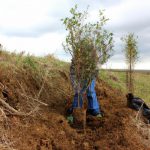
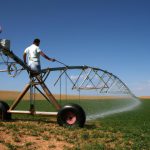

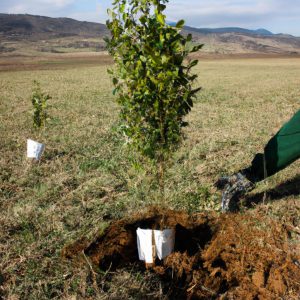
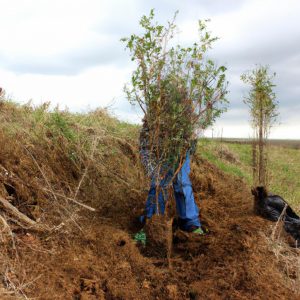
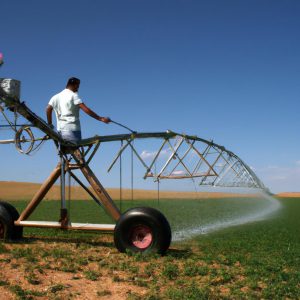
More Stories
Silvopasture: Agroforestry and Forestry for Sustainable Agriculture
Agroforestry Systems in Agriculture and Forestry: The Power of Integration
Alley Cropping in Agroforestry: A Convergence of Agriculture and Forestry